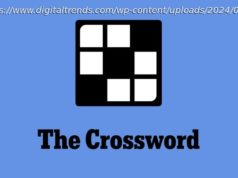Explore the synergy of Java and MongoDB for enterprise apps. Learn how Quarkus, Spring Data MongoDB, Morphia, Jakarta EE, and Eclipse JNoSQL streamline this integration for high-performance solutions. Perfect for developers and decision-makers.
In the ever-evolving landscape of enterprise applications, the need for efficient data management and scalability has never been more critical. In this digital age, where the volume of data generated and processed daily is staggering, harnessing the power of modern databases is paramount. MongoDB, a leading NoSQL database, has emerged as a robust solution for handling the unstructured and semi-structured data that underpins many of these applications. When MongoDB joins forces with Java, the possibilities are boundless, resulting in a dynamic combination that can drive your enterprise applications to new heights.
This comprehensive article will delve deep into the fusion of Java and MongoDB, exploring various ways to support this amalgamation within enterprise applications. The marriage of Java, a language renowned for its reliability, cross-platform compatibility, and extensive ecosystem, with MongoDB, a highly flexible and scalable database, opens up a world of opportunities. We will explore how developers and businesses can leverage this synergy to create resilient, high-performance applications.
Our journey through this article will take us through several exciting platforms and frameworks that enhance the integration of Java and MongoDB. From the lightning-fast, container-native Quarkus to the time-tested Spring framework and the Jakarta EE with Eclipse JNoSQL, Mophie, and JMOORDB, we will dissect each approach, offering insights, best practices, and use cases for each.
Whether you’re an experienced developer looking to enhance your skills or an enterprise decision-maker seeking to streamline data management for your applications, this article will provide valuable insights and practical knowledge to help you harness the immense potential of Java and MongoDB in your enterprise ecosystem. Join us as we embark on a journey to unlock the true power of this dynamic duo and see how it can revolutionize how you build, scale, and manage your enterprise applications.Exploring the Benefits of Quarkus With MongoDB
Quarkus, a revolutionary framework in Java-based enterprise applications, transforms how developers build and deploy their applications. Renowned for its speed, efficiency, and ease of use, Quarkus is quickly becoming the framework for building lightweight, container-native applications that scale effortlessly. But what makes Quarkus an ideal partner for MongoDB, and how does it enhance the communication layer between the application and the database?The Quarkus-MongoDB Connection
One of the standout features of Quarkus is its seamless integration with various data sources, including MongoDB. With dedicated guides and extensions tailored for MongoDB, Quarkus simplifies interacting with this NoSQL database. It means developers can focus on building their applications while Quarkus handles the MongoDB integration details.Efficient Data Operations
The code snippet demonstrates how easy it is to perform MongoDB operations using Quarkus. In the add method, a Fruit object is transformed into a Document, a fundamental data structure in MongoDB, and then inserted into the database. This concise code reflects the simplicity and clarity that Quarkus brings to MongoDB communication, making data operations a breeze.Panache: Combining Active Record and Repository Patterns
Quarkus supports fundamental MongoDB interactions and embraces the powerful Panache library. Panache introduces the Active Record and Repository patterns to MongoDB, simplifying data access and manipulation. The code sample for a Person class showcases how effortlessly you can perform everyday database operations using the Active Record pattern. You can easily find, persist, and even delete records, reducing the need for boilerplate code and streamlining the development process. Simultaneously, PanacheMongoRepository offers a repository pattern, allowing developers to encapsulate their data access methods in a repository, promoting a clean and maintainable code structure. This flexibility empowers developers to choose the best approach for their application’s needs.
The combination of Quarkus and MongoDB offers a powerful platform for building enterprise applications. Quarkus’s fast startup time, efficient memory usage, and straightforward MongoDB integration, with support for both Active Record and Repository patterns, can significantly boost productivity and performance.
Home
United States
USA — software Powering Enterprise Applications: Unleashing the Java-MongoDB Synergy






